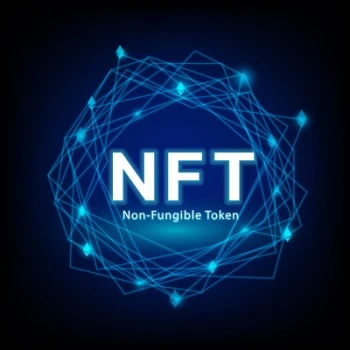In the last few years the concept of an NFT has become very famous and many creators and investors are making money doing the same. However, the concept has been around since early 2012. So, what is an NFT? A non-fungible token(NFT) meaning, a digital asset that is a non-interchangeable unit of data embedded in the blockchain. It is a form of digital ledger that can be traded and sold.
In 2012, a concept similar to that of an NFT, known as “coloured coins” was issued on the Bitcoin Blockchain. The intention behind these colored coins was such that they would manage real-word assets such as real estate, bonds, coupons, shares etc on the bitcoin blockchain and the same could be used to authenticate ownership of such assets. This was the first known concept that is very similar to that of the NFT Meaning. Thereafter over the few years few other things like cards, memes entered into the blockchain, but didn’t garner enough interest to stand out.
In the year 2014, the first NFT token was created by Kevin McCoy, known as “Quantum”. It is a pixelated octagon filled with different shapes that are displayed in a hypnotic way and such pieces today are being sold for 1 million dollars and more. Further, during the same time NFT creators shifted from using the Bitcoin Blockchain to the Ethereum Blockchain, as many bitcoin investors and users did not like the idea of allowing NFT tokens to be created on the bitcoin blockchain. The Ethereum blockchain introduced a set of token standards that would allow the creation of NFT tokens by the developers and proved to be more effective and fruitful.
In the year 2017, a company relatively famous today, known as Cryptopunks created unique characters that would be generated and embedded on the Ethereum Blockchain, which is the most preferred option in recent times. They said that no two characters would be the same and they would limit the number of characters to 10,000 so that the uniqueness is maintained. This is a very successful NFT project today, with some of them being sold to the tune of million dollars.
Towards 2018, many investors, creators, and other people started gaining interest within the field of NFT’s as a viable alternative or viable investment. The online game CryptoKitties was monetized on by selling tradeable cat NFT’s, which garnered a considerable amount of interest. NFT’s started to catch the public attention mostly through NFT gaming and metaverse projects. The first such one was known as Decentraland(MANA), a decentralized ethereum based VR Platform, wherein gamers could explore, build and collect items that they would eventually own.
In the year 2020, NFT became so famous and a viable investment that its value reached nearly USD 250 Million, and further within the first 3 months of 2021, more than USD 300 million was spent on NFT’s. There are numerous platforms that have come up with each of them hosting differentiators for creators and collectors. The main interest for creators and artists is such that there are no centralized fees like government tax, auction house fees, etc that would take up to 20-40% of the selling price. A perfect example would be the Opensea NFT marketplace, it is considered the largest NFT marketplace for art, music, collectibles, domain names, etc. Other platforms such as Niftex, allow users to buy a fraction of an NFT, if they are not able to afford the full NFT.
In the year 2021, the interest just increased even more with various other cryptocurrencies joining the NFT game with their own tokens, such as Solana, Flow, Cardano, Sandbox to name a few. After Facebook’s announcement of changing its name to META and moving into the metaverse, there was a huge surge in the NFT demand.
Conclusion:
The NFT meaning and token goes way back in history, before the peak of it as mentioned above. There have been many experiments and now it has moved forward from the experimental era into the mainstream decentralized space. Through things like tokenization, royalties, collaborations, etc between artists and collectors there is a huge use of the NFT technology in daily life.
Yet, the impact of NFT’s can reach its full potential only if the legal implications, issues around the ownership, etc of the same are streamlined. We believe that the NFT marketplace and decentralized space on a whole has a lot of potential to move in the right directions if legally compliant and properly regulated.







